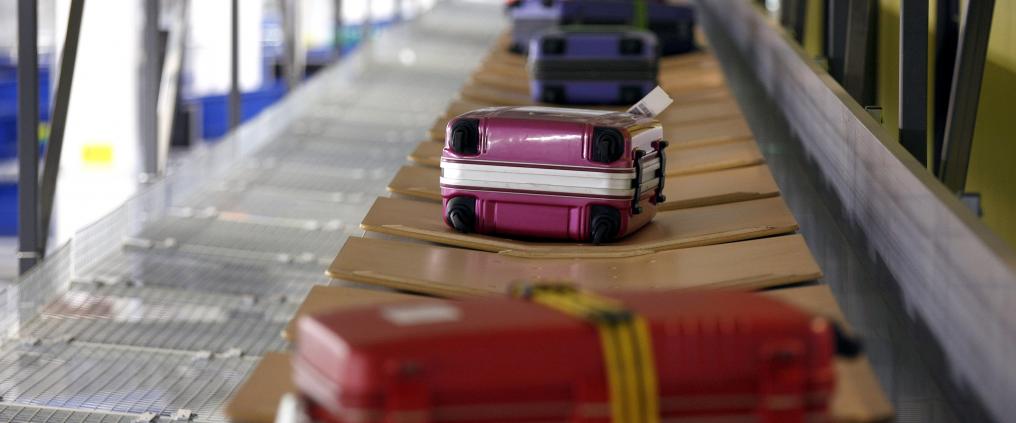That long, looped sticker you rip off your suitcase when you finally get home and unpack is actually a clever piece of design and engineering. Called the automated baggage tag (ABT), this was first used by many airlines in the early 1990s.
Since then, a host of improvements have made the humble ABT withstand the hectic, all-weather world of modern aviation. Thanks to its ability to meet contradictory requirements, this tag is a lot more than a disposable piece of barcoded paper.
Well-designed strip of plastic and silicon
First, when attached properly, it doesn’t tear even as it stumbles through mechanized airport baggage systems. An ABT is comprised of a complex composite of plastic and silicon, making it resistant to cold, heat, sunlight, ice, oil and moisture.
Next, ABTs are very easy to attach but impossible to detach – unless the passenger wants to do so. To remove the sticker from a bag’s handles, simply grab the loop from the inside, and with two hands, gently pull apart to remove it. The adhesive’s backing is designed not to leave any residue.
Then there’s the information on the tag itself. As aviation operations became more complicated, airlines began to use barcoded tags to sort and track luggage automatically through different airports and across the world.
Not all ABTs are exactly alike
“All baggage tags look alike but they are not completely the same; some variations can be found,” says Pyry Pennanen, Maintenance Manager at Finavia. “
A regular bag tag is custom-printed with the passenger’s name, flight details, and destination, and is read from the bottom up. There are pieces of information, however, that are not visible. “The tag number is actually 13 digits long but only the first ten are printed,” continues Pennanen. The first 4 digits are airline specific and it’s called the Baggage Tag Issuer Code (BTIC). 0105 is Finnair’s code. The next 6 digits are just a rolling number that starts from the beginning when the whole series is used. The last 3 digits, not printed on the tag, are the number of bags in the queue.
So few bags get lost because of these features found on the ABT. The bar code appears twice on the tag, offset by 90 degrees, making it possible to be read by either automatic or hand-held scanners. There’s even another safeguard against a detached tag and, consequentially, lost luggage. Called removable stubs, these small extra labels each bear a copy of the barcode and are often placed on the bag.
Additional reminders
Stubs from a previous flight can confuse airport scanners on your next flight, however, so make sure to remove all ABTs and stubs before you travel again. Of course, while it's important to remove old baggage stubs with old flight information, it’s just as essential to attach new ones with current flight details.
“Another problem is that often the system picks up more than just one barcode from the bag. This bag would then, again, require manual intervention, as an airport or airline employee has to determine which one is correct,” advises Pennanen. “If a passenger removes all old baggage tags from the suitcase, he or she effectively decreases the possibility of their baggage being mishandled.”
As self-service baggage drops and self-service check-ins are standard today, remembering to remove and store the baggage receipt found at the end of the self-printed baggage tag becomes even more crucial. If, for some reason the bag should miss the flight, all the necessary information that would enable the passenger to recover the suitcase is available on this receipt.
Lost luggage may be a near-universal experience, but it doesn’t necessarily have to happen to you.
Read more about how to use check-in and luggage machines.
